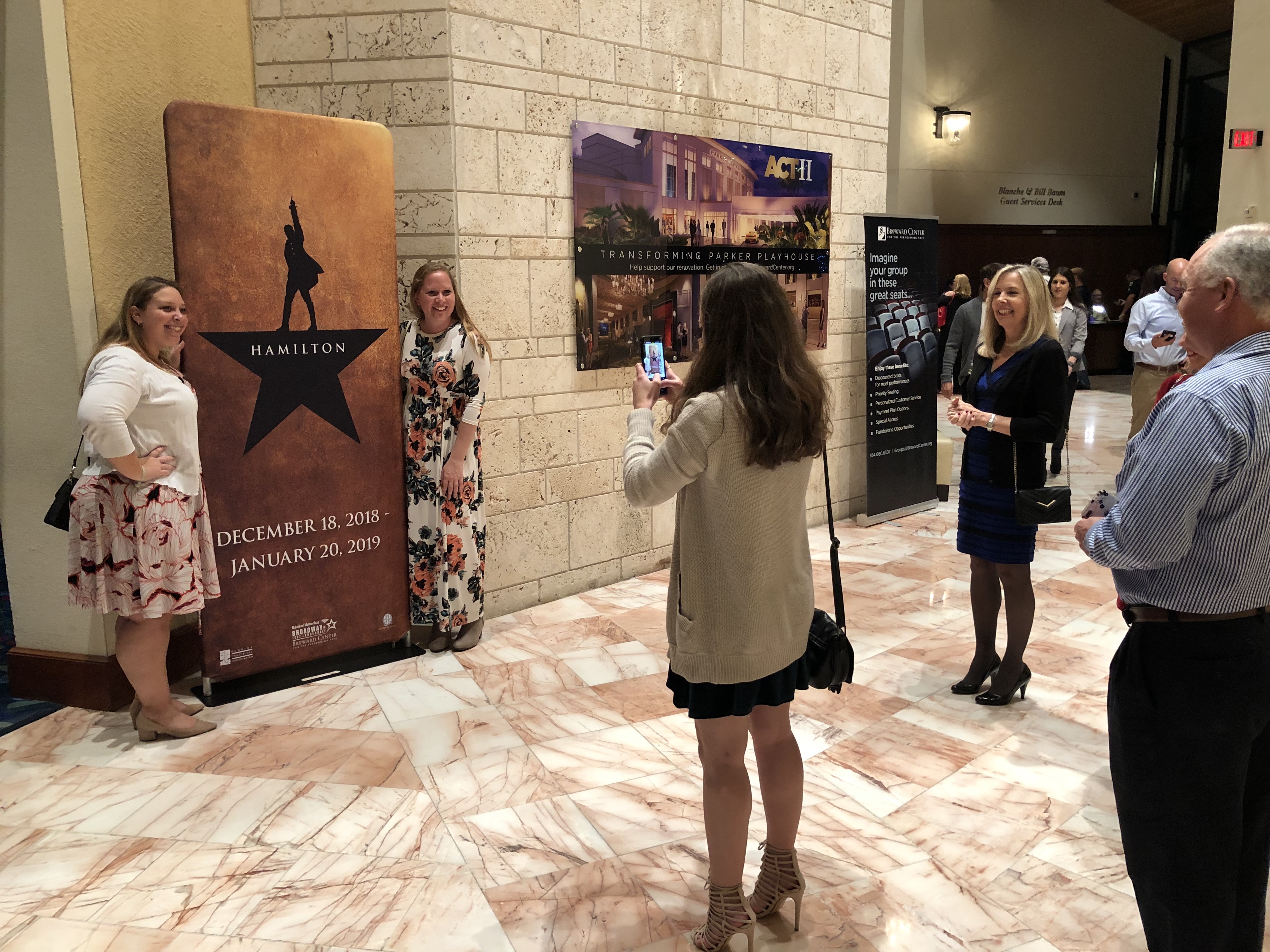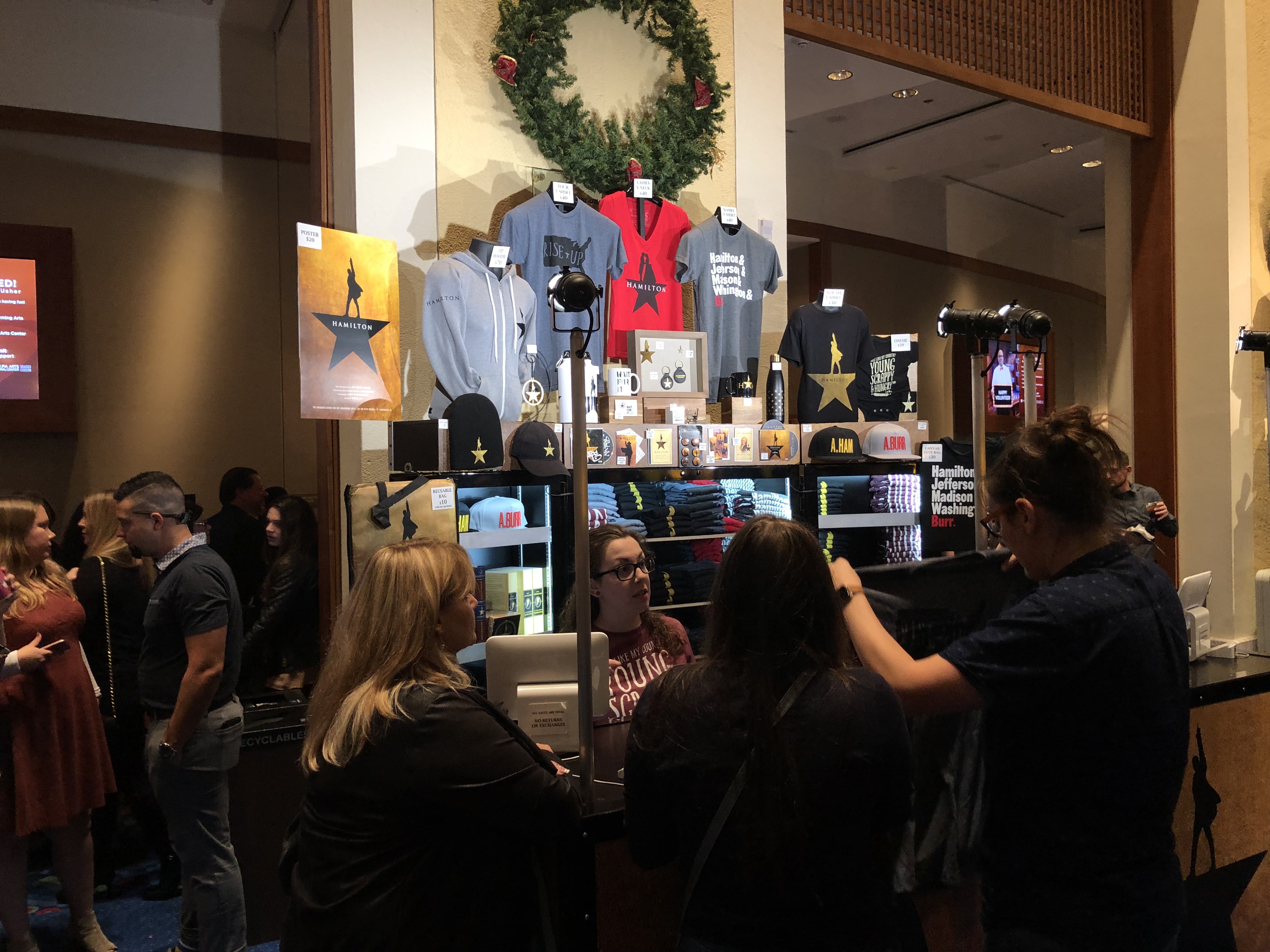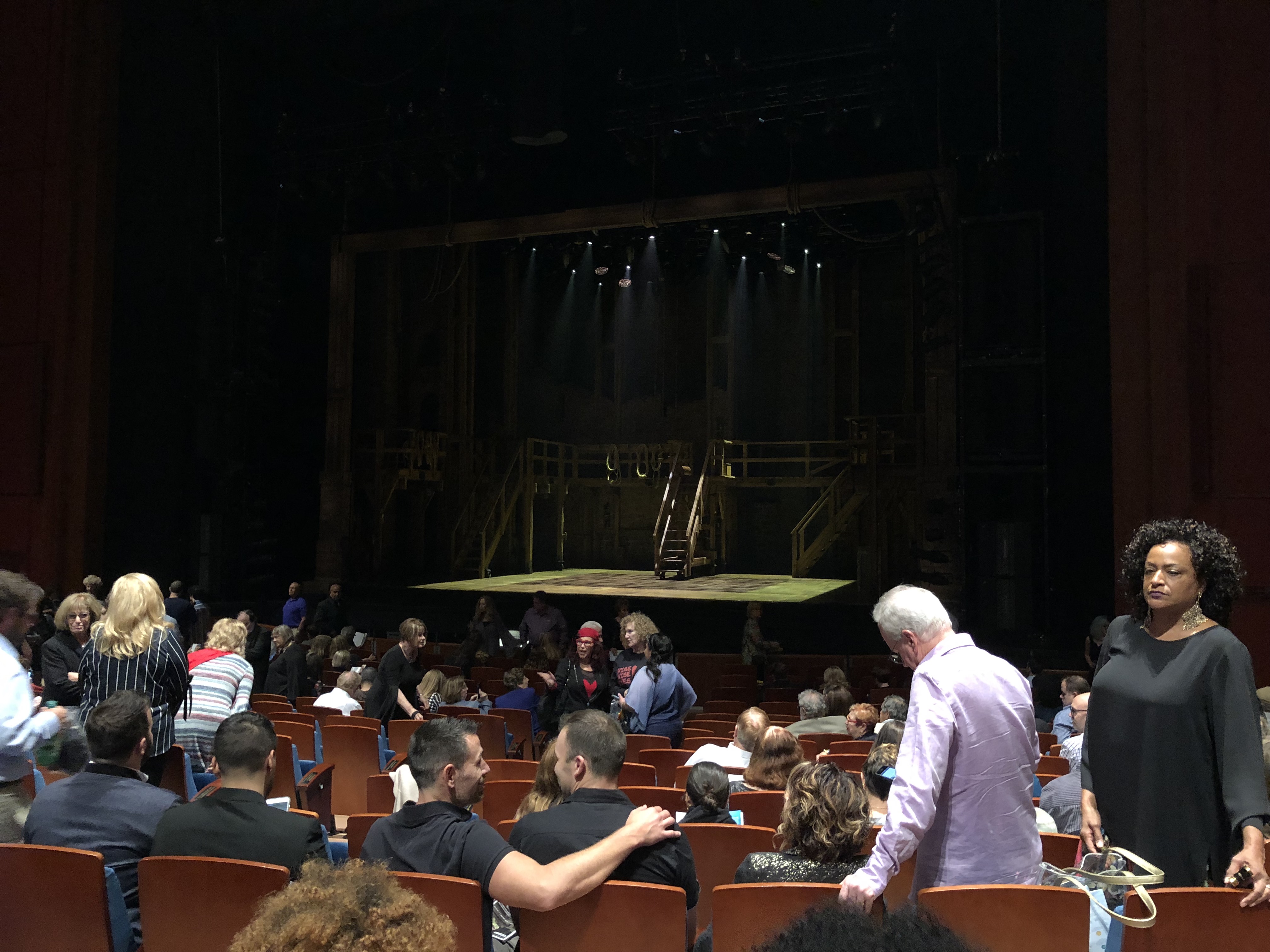As the heir-apparent to Les Miserables in tone, if not musical style, Hamilton is everything that you thought it would be, and more. You’ll cry, you’ll laugh, and then you’ll cry some more.

SHADE-O-METER RATING
5 OUTTA 5 WERKS: “10s ACROSS THE BOARD – LEGENDARY STATUS”

What’s Hamilton? It’s the smash Broadway musical that tells the story of one of America’s Founding Fathers, Alexander Hamilton. It swept the 2016 Tony Awards with 11 wins, including one for Best Musical. But really, who doesn’t know this show? What’s the Au-Rene Theater? It’s the main theater at the Broward Center for the Performing Arts. It holds about 2,600 people, and it has three levels. How was the venue? Elegant. The foyer is spacious.
ADVERTISEMENT

How was the parking? They have valet, or you can park in the garage for $12. The garage is about a block away. We also found a parking lot for $10 that’s a couple blocks away. It’s across the street from the Museum of Discovery and Science. This parking lot is a hidden gem, as there’s no line to enter it—you just pull right in. Fabulous! Does the venue serve liquor? Yes. How were the drinks? They were fine. We got one each. They measure the pour with a jigger, though, so you don’t get a drop extra. A double costs about $20. Does the venue serve food? They have some finger food. How was the food? We didn’t get any.

Where were the seats? Row V in the orchestra. How much were the tickets? $272.75. And if you think that’s a lot, they’re even more on Broadway. As a comparison, in the 1970s the ticket price for the Liza Minnelli vehicle, The Act, caused a stir for being too high. And what was the top price for that show, you might ask? $25. Was the show sold out? Yes. And if you’re think about seeing it, I wouldn’t wait to get tickets. I looked, and even the last show only had about 10 tickets left that weren’t re-sale ones. And these unprecedented sales aren’t just happening in South Florida. The first stop of the first national tour—there are now two national tours running simultaneously—was in San Francisco, with a run of about five months. The entire run sold out in 24 hours after it went on sale.

How was the show? The show started with an un-egalitarian audio notice from King George III, with him telling you to enjoy “my” show. The show then began with the famous “Alexander Hamilton” number, which foreshadowed the events of the show and of Hamilton’s life (think the “Ballad of Sweeney Todd” from Sweeney Todd). From there, the show moved to the year 1776. But to get full enjoyment from the show’s first few numbers likely requires knowledge of the score. It’s when the Destiny’s Child-ish Schuyler sisters appeared that the show really picked up for the uninitiated. And it never let up until the end. The entirety of the show vacillated between Hamilton’s private and public life (although dramatic license was taken with both). Regarding his public life, one saw how Hamilton rose all the way from an orphaned immigrant with no money to become the first Secretary of Treasury, only to be killed in a duel by Vice President Aaron Burr. His private life saw equal tragedy with the death of his first child and first son in a duel defending Hamilton’s honor, and a period of estrangement from his wife because of a sex scandal. The acting and singing from the performers in this tour, monitored the “Phillip Tour,” was fine. But the original Broadway cast, they ain’t. A standout performance came from Jon Patrick Walker as King George III. And although his performance was in contrast to Jonathan Groff’s Broadway take of the king as icy and unhinged, nevertheless, Walker’s version was resplendent with pomp, circumstance and rolling r’s. And when the end of the show finally came (the running time is just short of three hours), it was not bombastic. To the contrary, it featured an economy of craft, as all good works of the stage or screen should have, and left the viewer wanting more. The curtain call consisted of one line of actors—including Mosieur Hamilton—instead of individual bows, which could be considered a nod to the democratic predilection of America’s Founding Fathers.

How was the crowd? They were into it, but their response did not equal the popularity of the show. It’s possible that some were emotionally overwhelmed at the end. It’s also possible that some of the audience consisted of season subscribers, who may not be familiar with the work. What could have improved the show? Some of the dialogue was inaudible during some of the parts, which can be a problem with large booking houses.

What was surprising about the show? Spoiler alert: If you want to be completed surprised by the show, don’t read any further. Oh, where to begin? One, I had no idea that the show utilized a double rotating stage—otherwise known as a concentric stage—with one stage rotating within another. The show’s choreography capitalized on these mechanics for maximum dramatic effect, probably even more so than with Les Miserables’ famous rotating stage. And two, it’s a requirement of both tours that they not only have the concentric stages, but they must be able to duplicate the original Broadway choreography and lighting design. Beyond the quality of the music and the lyrics, if there was one standout, it was the combination of the choreography, lighting and staging. I have never seen those theatrical elements used as effectively in the theater as they were in this show.
The Broward Center for the Performing Arts is located at 201 S.W. 5thAve., in Fort Lauderdale, Florida. The show runs through January 20. There are also a limited number of lottery tickets that are available online two days before each show for $10, in commemoration of the “ten-dollar Founding Father.”
I’ve read a few excellent stuff here. Certainly pprice bookmarking for
revisiting. I wonder how much effort you put to make this kind of fantastic
informative website.
Here is my web blog Mckinley